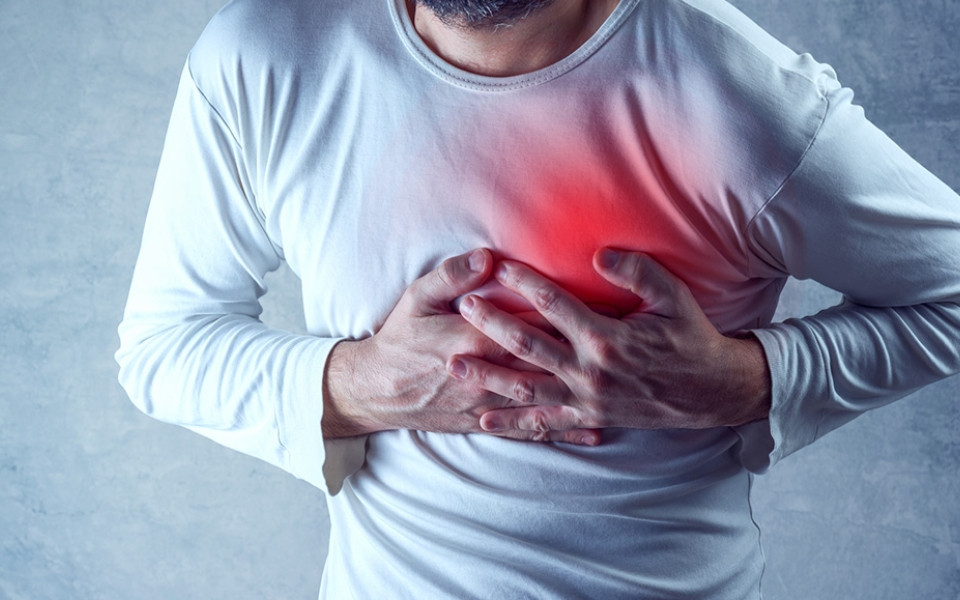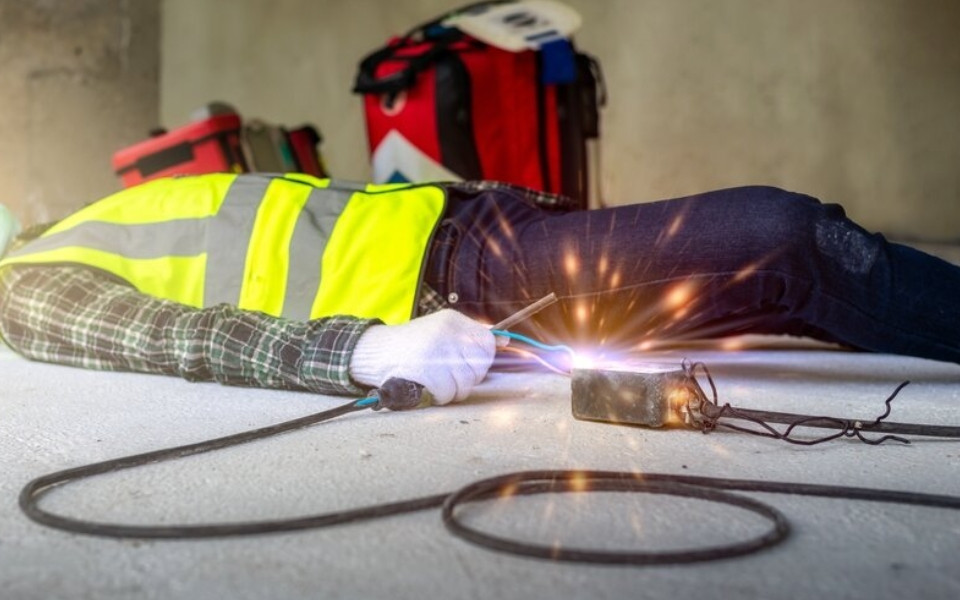Cardiopulmonary Resuscitation (CPR)
Cardiopulmonary Resuscitation (CPR) is a crucial, life-saving technique used to assist individuals whose heartbeats or breathing have ceased. CPR involves the application of chest compressions and rescue breaths, which help circulate blood and oxygen throughout the body. In essence, it temporarily assumes the function of the heart and lungs.
The Importance of CPR
Having the knowledge and ability to perform CPR is extremely important as it can make all the difference in life-or-death situations. During cardiac or respiratory emergencies, time is of the essence. Without oxygenated blood circulating, brain damage can occur within minutes. CPR serves as a crucial lifeline by ensuring a flow of oxygen-rich blood to the body's vital organs until more advanced medical care becomes available.
The main objective of CPR is not just to restart the heart but rather to ensure a continuous supply of oxygenated blood to vital organs like the brain. This helps sustain life until defibrillation can be performed or the person receives further medical attention.
In many cases, bystanders are the first to witness someone collapsing from sudden cardiac arrest. If those bystanders can initiate CPR immediately, the chances of the individual's survival can double or even triple. It emphasizes the importance of broad-based CPR education and training for the general public.
CPR is a foundational tool in emergency life-saving. By understanding its importance and mastering its technique, you become equipped to act decisively and confidently in critical situations, potentially saving a life.
CPR is a foundational tool in emergency life-saving. By understanding its importance and mastering its technique, you become equipped to act decisively and confidently in critical situations, potentially saving a life.
Situations That Require CPR
Recognizing Situations for CPR
The effectiveness of CPR lies not only in the technique itself but also in its timely administration. Recognizing situations that require CPR is the first step towards saving a life. A delay in recognizing the need and initiating CPR can lead to irreversible brain damage or even death.
Initiating CPR
If you come across someone who is unresponsive, it is crucial to check their breathing and pulse. If the person is not breathing or breathing in an abnormal way and does not have a pulse, begin performing CPR right away. Remember, every second matters.
Knowing when to administer CPR can make the crucial difference between life and death. While the situations mentioned are the most typical instances where CPR may be necessary, it is always important to prioritize safety, trust your training, and respond promptly.
Knowing when to administer CPR can make the crucial difference between life and death. While the situations mentioned are the most typical instances where CPR may be necessary, it is always important to prioritize safety, trust your training, and respond promptly.
Common Scenarios for CPR
Sudden Cardiac Arrest (SCA)

This is the most common situation where CPR is needed. SCA is when the heart unexpectedly ceases to function. This can be due to various causes like electrical disturbances in the heart, heart diseases, or respiratory issues.
Drowning

In drowning cases, the lungs fill with water, leading to a lack of oxygen in the body. CPR can help circulate whatever oxygen remains in the bloodstream.
Choking

A blocked airway can lead to a lack of oxygen in the brain. If the obstruction isn't removed promptly and the individual loses consciousness, CPR may be necessary.
Drug Overdose

Certain drug overdoses can suppress the respiratory system, which can ultimately lead to respiratory failure. In cases where breathing has ceased, immediate CPR becomes essential.
Electrocution

Electric shock can disrupt the heart's rhythm. If a person's heart stops after being electrocuted, they need CPR.
Respiratory Arrest

This is when breathing stops, but the heart may still be beating. Causes can range from asthma to a severe allergic reaction. If breathing isn't restored, the heart may stop, necessitating CPR.
The "Chain of Survival" Concept
Understanding the "Chain of Survival"
The "Chain of Survival" serves as a symbolic depiction of a series of actions that, if performed swiftly and effectively, can greatly enhance the likelihood of survival for an individual facing cardiac arrest. Each element in this chain represents a critical step, and the overall success of the resuscitation
endeavor depends heavily on the strength and swiftness with which each link is executed.
The Five Key Links in the Chain of Survival
- Early Recognition and Call for Emergency Assistance - The first crucial step is to recognize the signs of a cardiac arrest and immediately call for emergency medical services. Acting promptly by alerting emergency services significantly improves the chances of survival. Bystanders also play a vital role during this stage as they are often the first witnesses to the event.
- Early CPR - Once cardiac arrest is recognized, initiating CPR immediately can help circulate blood that carries oxygen to the vital organs. This step is important in preserving the brain and heart tissue, especially during the critical first few minutes when the heart is not beating.
- Rapid Defibrillation - The leading cause of cardiac arrest is ventricular fibrillation, a condition in which the heart beats chaotically and ineffectively. To restore a normal rhythm, prompt defibrillation is crucial. That's why many public places are equipped with Automated External Defibrillators (AEDs), which can be used by trained bystanders to save lives.
- Effective Advanced Life Support - Once emergency medical personnel arrive on the scene, they can provide advanced life support. This includes more sophisticated methods of resuscitation and life-saving medications.
- Post-Cardiac Arrest Care - After successful resuscitation, the individual needs specialized care to optimize recovery and prevent further complications. This includes both medical interventions and, when necessary, therapeutic measures like controlled cooling (therapeutic hypothermia) to protect the brain.
Understanding Cardiac Arrest
When discussing matters of the heart, especially in emergencies, it is vital to differentiate between cardiac arrest and a heart attack. Though they are closely related, they represent two distinct cardiac events, with their respective symptoms, causes, and initial interventions.
Cardiac Arrest
Cardiac arrest is a sudden halt in heart function. This means that the heart stops beating abruptly, leading to a lack of blood flow to essential organs such as the brain. It is primarily an issue with the heart's electrical system, causing irregular heartbeats or arrhythmias like ventricular fibrillation.
Symptoms:
- Loss of responsiveness (no response when tapped or shouted at)
- No normal breathing (absence of breath or gasping)
- No pulse
Immediate intervention through CPR is critical during a cardiac arrest. By performing chest compressions, you manually pump the heart to keep blood circulating. This buys crucial minutes until a defibrillator can be used or professional medical assistance arrives.
Understanding Heart Attack
During a heart attack, which is medically referred to as a myocardial infarction, there is an obstruction in the blood flow to a specific part of the heart muscle. If blood flow isn't restored promptly, that affected section of the heart muscle starts to deteriorate. In essence, a heart attack can be understood as a blockage issue within the coronary arteries that restricts the normal blood flow.
Symptoms:
- Chest pain or discomfort (pressure, squeezing, fullness, or pain)
- Pain or discomfort in the arms, neck, jaw, stomach, or back
- Shortness of breath
- Nausea, lightheadedness, or cold sweats
Heart attacks can sometimes begin gradually, with mild pain or discomfort. It is crucial to seek immediate medical attention if any symptoms of a heart attack are present.
Cardiac Arrest and Heart Attack
While cardiac arrest and heart attacks are different events, it's important to note that a heart attack can sometimes lead to cardiac arrest. In a heart attack, damage to the heart can disrupt its electrical system, potentially leading to a dangerous irregular heartbeat and subsequent cardiac arrest. However, it's also worth mentioning that not all cases of cardiac arrest are caused by heart attacks. Other factors such as drowning, trauma, or drug overdose can also trigger cardiac arrest.
In emergency response situations, clarity is absolutely crucial. Understanding the distinction between cardiac arrest and a heart attack is essential in providing the proper first aid. Time is of the utmost importance - regardless of whether someone is experiencing a heart attack or cardiac arrest, taking immediate action can make a life-saving difference. It's vital to call for emergency services right away and initiate appropriate interventions. This could involve administering CPR in cases of cardiac arrest or helping someone who is having a heart attack remain calm and still until professional help arrives.
The ABCs of CPR
At the heart of any first-aid technique, especially CPR, lies a foundational concept known as the ABCs: Airway, Breathing, and Circulation. These elements represent the core priorities when assessing and assisting an unresponsive individual.
Airway
The first and foremost step in the CPR process is ensuring the victim's airway is open. When someone becomes unconscious, their muscles relax, which can cause the tongue to block the back of the throat. This blockage prevents air from reaching the lungs.
To ensure the airway is clear:
- Place the person flat on their back on a hard surface.
- Tilt their head backward slightly to lift the chin.
- Listen for breathing. If there's no breathing, you have a cue to proceed to the next step.
Breathing
After securing the airway, the next priority is to address breathing. Breathing is essential as it supplies oxygen, a vital component for cell and organ survival. If the individual is not breathing or only gasping, rescue breaths must be administered.
To administer rescue breaths:
- Pinch the person's nose shut.
- Take a normal breath and cover their mouth with yours, ensuring a good seal.
- Blow until you see the chest rise, which typically takes about one second.
However, it's essential to note that recent CPR guidelines, especially for untrained bystanders, emphasize compression-only CPR. This means that if you're unsure or unwilling to give breaths, you can focus solely on chest compressions.
Circulation
The last component, circulation, focuses on keeping the blood circulating, especially when the heart isn't beating effectively. Effective circulation ensures that the vital organs, especially the brain and heart, receive oxygen-filled blood.
To ensure proper circulation through chest compressions:
- Place the heel of one hand on the center of the person's chest, just below the nipple line. Place the other hand on top, interlocking your fingers.
- Using your upper body weight, press straight down on the chest at least 2 inches deep.
- Allow the chest to return fully before compressing again.
- Aim for a rate of 100-120 compressions per minute.
Chest compressions are the cornerstone of modern CPR. They're so crucial that even if you skip rescue breaths, you should never skip chest compressions.
Chest Compressions
Chest compressions, a vital component of CPR, circulate blood throughout the body when the heart cannot effectively do so on its own. Proper technique, including the right depth, rate, and hand placement, ensures the most effective blood flow, increasing the chances of survival for someone in cardiac arrest.
Depth of Compressions
Properly compressing the chest during CPR is crucial to ensuring that oxygenated blood reaches vital organs, including the brain. For adults, compressions should be at least two inches (5 cm) deep. For infants and children, a depth of about one-third the diameter of the chest is recommended: approximately 1.5 inches (4 cm) for infants and around two inches (5 cm) for children. Deep compressions ensure effective pumping of blood by adequately compressing the heart.
Rate of Compressions
Maintaining a steady rhythm is crucial when performing chest compressions. Aim to deliver compressions at a rate of 100-120 per minute. One way to remember the optimal speed is by thinking about the tempo of the song "Stayin' Alive" by the Bee Gees. This consistency in compression rate helps ensure continuous blood flow during the procedure.
Hand Placement
Getting the hand placement right is crucial to delivering effective chest compressions:
For Adults
➥ Place the heel of one hand on the center of the person’s chest, which is typically located just below the nipple line.
➥ Place your other hand on top of the first hand, interlocking your fingers.
➥ Keep your elbows straight, positioning your shoulders directly over your hands. Use the weight of your upper body to push down.
➥ Place the heel of one hand on the center of the person’s chest, which is typically located just below the nipple line.
➥ Place your other hand on top of the first hand, interlocking your fingers.
➥ Keep your elbows straight, positioning your shoulders directly over your hands. Use the weight of your upper body to push down.
For Children
➥ Use one hand if the child is small or two hands if they're larger, but ensure not to compress too deeply. The placement is similar to that of adults, centered on the chest.
➥ Use one hand if the child is small or two hands if they're larger, but ensure not to compress too deeply. The placement is similar to that of adults, centered on the chest.
For Infants
➥ Use two fingers (typically the index and middle fingers) to deliver compressions. Place these fingers in the center of the chest, just below an imaginary line running between the infant’s nipples.
➥ Use two fingers (typically the index and middle fingers) to deliver compressions. Place these fingers in the center of the chest, just below an imaginary line running between the infant’s nipples.
Becoming proficient in performing chest compressions with the correct depth, rate, and hand placement requires practice. Whether you have a background in healthcare or not, mastering these aspects is crucial to effectively administer CPR when it matters most. When uncertain, remember that applying firm and rapid pressure to the center of the chest is of utmost importance. While precision is vital, taking immediate action can often be what separates life from death. Always stay updated with the latest guidelines provided by reputable organizations like the American Heart Association or Red Cross.
Rescue Breaths
Properly performed rescue breaths can be a critical intervention for someone in need. They work in conjunction with chest compressions to ensure that oxygen reaches the lungs and is then circulated throughout the body, providing vital oxygenated blood to the brain and other essential organs. Understanding the correct technique and timing of rescue breaths is crucial for effective CPR.
Technique for Delivering Rescue Breaths
Before initiating a rescue breath, it's essential to ensure the person's airway is open. To do this:
➜ For an adult or child: Tilt their head backward slightly by lifting the chin. This opens up the airway.
➜ For an infant: Do not tilt the head too far back; a neutral position or a slight tilt is usually enough.
➜ For an adult or child: Tilt their head backward slightly by lifting the chin. This opens up the airway.
➜ For an infant: Do not tilt the head too far back; a neutral position or a slight tilt is usually enough.
Checking for Breathing
Before giving a rescue breath, take a moment to look, listen, and feel for breathing. Look for the rise and fall of the chest, listen for breath sounds, and feel for air against your cheek.
Sealing the Mouth:
➜ For an adult or child: Pinch the nose shut using one hand. With your other hand, cover their mouth with yours to create an airtight seal.
➜ For an infant: Cover both the nose and mouth with your mouth, ensuring a seal.
➜ For an infant: Cover both the nose and mouth with your mouth, ensuring a seal.
Delivering the Breath:
Give a steady breath, just enough to make the chest visibly rise. Do not give too forceful a breath, as it can cause complications.
Administering Effective Rescue Breaths
Timing of Rescue Breaths
When it comes to CPR for adults, after every 30 chest compressions, administer two rescue breaths. Each breath should last about one second, causing the chest to rise visibly but not overinflate. For children and infants, if two rescuers are present, the ratio of chest compressions to rescue breaths is 15:2; otherwise, it remains 30:2, like adults.
What if the Chest Doesn't Rise?
If you notice the chest isn't rising during a rescue breath, it could mean the airway isn't open, or there might be an obstruction. Reposition the head to ensure the airway is open, and try again. If the chest still doesn't rise, consider the possibility of a blocked airway and take measures accordingly.
Performing chest compressions correctly is only part of the equation when it comes to CPR. Delivering effective rescue breaths is equally important and works hand in hand with chest compressions to increase the likelihood of survival. Having confidence in your technique can make a significant difference in a time-sensitive situation.
Remember, every second matters when someone's life is at stake, and being knowledgeable about the proper steps empowers you to act quickly and effectively. Stay informed by regularly referring to updated CPR guidelines from reputable organizations.
Remember, every second matters when someone's life is at stake, and being knowledgeable about the proper steps empowers you to act quickly and effectively. Stay informed by regularly referring to updated CPR guidelines from reputable organizations.
Special Considerations
CPR is not a one-size-fits-all technique. Different situations and individuals require specific considerations and adjustments in the CPR approach.
CPR for Infants
When it comes to performing CPR on infants, it is important to take special care due to their delicate nature. Here are some key points to remember:
1. Hand Position: Use two fingers (the index and middle fingers) to deliver chest compressions, placing them on the breastbone just below the nipple line.
2. Compression Depth: Compress the chest about 1.5 inches (4 cm) deep.
3. Breaths: As with adults, give two rescue breaths after 30 compressions, but ensure that your mouth covers both the infant's nose and mouth. Use gentle puffs of air, enough to see the chest rise.
1. Hand Position: Use two fingers (the index and middle fingers) to deliver chest compressions, placing them on the breastbone just below the nipple line.
2. Compression Depth: Compress the chest about 1.5 inches (4 cm) deep.
3. Breaths: As with adults, give two rescue breaths after 30 compressions, but ensure that your mouth covers both the infant's nose and mouth. Use gentle puffs of air, enough to see the chest rise.
CPR for Children
Children, typically defined as ages 1 through puberty, have more resilience than infants but still need specific considerations:
1. Hand Position: When performing chest compressions on a child, you can use either one or both hands, depending on their size. If using one hand, place the heel of your hand in the center of their chest. If using both hands, stack one hand on top of the other.
2. Compression Depth: Aim to compress the chest by about one-third of its depth, approximately 2 inches (5 cm).
3. Breaths: Provide breaths in the same manner as for adults, but ensure they're proportionate to the child's size.
1. Hand Position: When performing chest compressions on a child, you can use either one or both hands, depending on their size. If using one hand, place the heel of your hand in the center of their chest. If using both hands, stack one hand on top of the other.
2. Compression Depth: Aim to compress the chest by about one-third of its depth, approximately 2 inches (5 cm).
3. Breaths: Provide breaths in the same manner as for adults, but ensure they're proportionate to the child's size.
CPR for Pregnant Women
Pregnant women present unique challenges due to the presence of the fetus and physiological changes:
1. Positioning: If possible, tilt the pregnant woman slightly to her left side. This position helps relieve pressure on the inferior vena cava, a significant vein that returns blood to the heart and ensures better blood flow.
2. Chest Compressions: Perform compressions in the standard manner, but be mindful of the tilt and the potential for the fetus to shift.
3. Breaths: Give breaths as you would for any adult, ensuring the airway is clear.
1. Positioning: If possible, tilt the pregnant woman slightly to her left side. This position helps relieve pressure on the inferior vena cava, a significant vein that returns blood to the heart and ensures better blood flow.
2. Chest Compressions: Perform compressions in the standard manner, but be mindful of the tilt and the potential for the fetus to shift.
3. Breaths: Give breaths as you would for any adult, ensuring the airway is clear.
Assessing Scene Safety
When it comes to administering first aid or performing CPR, the safety of the rescuer is of utmost importance. While the desire to save someone's life is admirable, it should never come at the cost of your own safety and well-being. Before rushing into action, it is crucial for every rescuer to carefully evaluate the scene for any potential hazards.
The Cardinal Rule: "Your Safety Comes First"
When faced with a medical emergency, it's natural to feel an adrenaline rush and want to jump into action immediately. However, it's crucial to take a moment and assess the situation before acting. By rushing in without proper evaluation, there is a risk of the rescuer becoming another victim. This not only complicates the emergency but also decreases the chances of providing effective assistance to the original victim.
